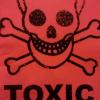Chlorate Safety
#1

Posted 26 February 2004 - 10:09 PM
I said I planned to buy "Working Safely With Chlorate" by Bill Ofca, and it arrived a couple of days ago. As well as the usual things we all know - like don't mix sulphur and chlorates, don't make Armstrong's mix, never grind chlorate compositions, there is a lot that I certainly didn't know, and I'm guessing a lot of people here who already use chlorates, or like me, would like to make colours so will start using them, didn't know either. I am very glad that I bought this book before using any chlorate in devices, as I can see that I would have done things that are unsafe. What follows are some extracts that I think apply most to hobbyists, and which are not as firmly ingrained in everyone?s mind as The One incompatibility to rule them all.
Here is a list of the chemicals that Ofca says must never be mixed with chlorates:
CHEMICALS THAT MUST NEVER BE MIXED WITH CHLORATES
Aluminum powders - all [1]
Ammonium Perchlorate or any ammonium compounds [2]
Antimony (tri)sulfide
Any and all metallic oxides of any kind [3]
Any and all metal powders or filings (some are listed herein) [4]
Any of the Chromiums or Chromates
Asphalt. (Gilsonite)
Black powder [5]
Calcium Carbonate (also beware of hard water)
Chinese needles (antimony sulfide)
Copper sulfate (and all other soluble copper compounds)
Gilsonite, (Asphalt)
Hexamine
Hydrocarbon fuels [6]
Iron oxide
Iron filings or powder
Lampblack (petroleum based due to sulfur content) [7]
Lead oxide (red)
Magnalium
Magnesium
Magnesium Carbonate
Napthalene
Realgar (Arsenic sulfide)
Red Phosphorus
Sodium Oxalate
Steel filings or powder
Sulfur or any compounds of sulfur, sulfides, and sulfates
Titanium (very hard material, raises friction and impact sensitivity)
Zinc
Zirconium (extreme electrostatic, friction and impact sensitivive
Chlorides [8]
In all honesty, I have to say the above list is by no means complete.
There are many more compounds that I am sure are problems with the
chlorates. However, I have attempted to list to the best of my knowledge.
those chemicals that are commonly used in fireworks and have a history of
creating problems, incidents or accidents.
Here is a summary of some of the additional information Ofca provides with some of these (throughout the book)
[1] Note that aluminium powder is listed as unacceptable. Whilst some people may say that sulphurless chlorate flash powder is safe, Ofca says that mixtures of aluminium and chlorate are too sensitive to accidental ignition to use safely. Chlorate must not (as he says) be mixed with _any_ metal powder.
[2] Whilst ammonium chloride has long been used with potassium chlorate in smoke compositions relatively safely, Ofca attributes this to the large excess of fuel and carbonate neutralisers in such compositions, so no easy chlorine donor for your stars (plus, as BigG explained, it doesn't work anyway).
[3] This came as a surprise to me. Metallic oxides include copper oxide, which I believed would be a safe way to obtain blue colours. Ofca stresses in several places that copper oxide _does_ cause spontaneous ignition of chlorate compositions, as well as sensitising them dangerously. I will edit the posts where I included unsafe blue compositions to point this out to anyone who might use them.
[4] Apart from the reactivity of some metal powders and the increased sensitivity that results from this, hard metal particles, including of less reactive metals like iron, greatly sensitise the composition to accidental ignition. Therefore don't use metals in chlorate compositions, or any other hard particulate matter, eg sand (can't see why you'd want to, it was just an example).
[5] Whatever some people may say about BP being safe with chlorates as the sulphur isn't "free," Ofca says that these mixtures are not acceptable. However, he makes reference to rolling stars with a layer of prime to isolate them from "a black powder burst charge." See below for more on this.
[6], [7] Ofca lists these as incompatible because they often contain small amounts of sulphur. Note that he distinguishes between lampblack, made by burning fossil fuels, and carbon black, made by burning wood.
[8] Chlorides were not included in this list, but he says elsewhere that they sensitise chlorates to dangerous levels. His believes that the maximum amount of chloride should not exceed 0.08%. This is rather worrying, as many of us use home made chlorate. All the processes for making it involve separating the potassium chlorate from sodium/excess potassium chloride.
Here follows a list of chemicals he says are known to be compatible with chlorates:
CHEMICALS KNOWN TO BE COMPATIBLE WITH CHLORATES
Acetone
Alcohol
Auramine dye (green smoke compositions)
Barium Carbonate
Barium Nitrate (oxidizer)
Boron
Carbon Black (not lampblack)
Charcoal
Chlorowax
CMC (carboxymethylcellulose)
Copper Acetoarsenite (Paris Green, strong toxic)
Copper Carbonate (basic)
Copper Oxychloride
Cryolite (sodium flouride)
Indigo Pure dye (green smoke compositions)
Lactose
Methylene Blue dye (blue smoke compositions)
Nitrocellulose
Para Red dye (red and violet smoke compositions)
Paris Green (copper acetoarsenite, strong toxic)
Parlon (chlorinated rubber)
Phthalocyanine Blue dye (used in blue and green smoke compositions)
Potassium Nitrate (oxidizer)
Potassium Perchlorate (oxidizer)
PVC
Red Gum (Accroides Resin)
Rhodamine B dye (used in red and violet smoke compositions)
Saran
Shellac
Sodium Bicarbonate
Sodium Nitrate (oxidizer, non-aqueous binders only)
Strontium Carbonate
Strontium Nitrate (oxidizer, non-aqueous binders only)
Teflon
Finally, a few of the points he made about safe working with chlorates were:
1) Do not dry chlorate stars in the sun. UV light promotes the formation of chlorites, greatly sensitising the composition.
2) A composition where potassium chlorate makes up 50% or less of the total oxidiser content, the rest being a compatible oxidiser and compatible fuels, is much less sensitive to accidental ignition than a straight chlorate one.
3) Round stars are safer than cut ones, as they do not have corners to scrape or be crushed, and can be evenly coated with a sulphurless prime. The purpose of this is not to increase ignition sensitivity, but to protect the chlorate composition from being scraped. He also says that stars primed in this way can be used in a shell with a BP burst bag in the middle, the space between the stars being filled with granulated sulphurless prime. He does not say that these protected stars can be mixed with a BP break charge.
There is far more in the book, and I have tried not to give away too much so I don't put people off buying it. However, I felt that this information is something people using chlorates need to know, whether or not they are going to buy the book, and hope that Bill Ofca wouldn't mind me posting it here. Really, if you are using chlorates, get it. It is a really handy reference I'm very glad to have, and it's only $17.95
#2

Posted 26 February 2004 - 10:19 PM
Cheers Kyle Spooner
#3

Posted 26 February 2004 - 10:29 PM
The oxides suprise me, although I assume it is because of their catalytic effect combined with the general instability of 'heavy' metal chlorates.
http://www.vk2zay.net/
#4

Posted 27 February 2004 - 01:05 PM
There are many variables involved and they involve different levels of risk.
Chlorate and Phospherous are a deadly combination, but toy caps are still made that way...
Use common sense, experiment on very small batches if you are in any doubt.
 thegreenman
thegreenman
#5

Posted 27 February 2004 - 06:04 PM
alany: I was surprised by the presence of these two carbonates as well, as, like you say, they are often used as buffers to increase safety. However, all my other colouring agents are "safe" carbonates, so they will handle any acid. Bill Ofca has made thousands of pounds of chlorate stars without a single accident, so I intend to play by his rules.
#6

Posted 27 February 2004 - 10:48 PM
Phoenix - great posts. I don't have Bill's book with me in the UK, so I'm very glad you quote it, and I totally agree with you. Bill has more experience then probably anyone in this forum - following his advice is a good bet. His book is also recommanded by the best people in the business.pyrodude: Skylighter.
alany: I was surprised by the presence of these two carbonates as well, as, like you say, they are often used as buffers to increase safety. However, all my other colouring agents are "safe" carbonates, so they will handle any acid. Bill Ofca has made thousands of pounds of chlorate stars without a single accident, so I intend to play by his rules.
#7

Posted 25 June 2007 - 01:02 PM
and was told never to mix Nitrates and Chlorates either?
the Ca and Ba are the most confusing though as Sr is right in the middle between then!?
#8

Posted 24 May 2009 - 03:05 PM
But I really wonder why the presence of chloride sensitizes chlorates at "dangerous" levels
Also why the presence of calcium carbonate is incompatible ?
Does he explain these things in his book ?
#9

Posted 07 June 2009 - 04:21 PM
Calcium is on there because it's pretty hygroscopic. I don't recall it being explosive or anything.
#10

Posted 07 June 2009 - 10:22 PM
Potassium chlorate does not react
with nitric acid, but if there is potassium chloride in the potassium
chlorate, it causes a violent reaction with the generation of chlorine
dioxide.
Potassium chlorite, KClO2,, ignites or explodes in
contact with sulphur or a sulphide and potassium chloride, KCl, as
described above.
We don't get a detailed explanation "why" it happens so, but it explains a little.
#11

Posted 08 June 2009 - 05:53 AM
Edited by Mumbles, 08 June 2009 - 05:55 AM.
#12

Posted 19 December 2017 - 06:57 AM
Edited by PeteyPyro, 21 January 2018 - 05:20 PM.
#13

Posted 16 January 2018 - 07:37 PM
Bump. I am reviewing my star comps, some are very old ones, and want to be able to easily find this thread again. I can't find a copy of Bill Ofca's book on working with Chlorates safely via Google yet. If Bill cautions against something, I'd take it as true, unless. ... well I'd take it as gospel, period.
Please don't bump threads "so you can find them more easily" just bookmark the link in your browser, it's not hard.
Also I'm sure you could buy a copy from Ned Gorsky if you wanted it!
1 user(s) are reading this topic
0 members, 1 guests, 0 anonymous users
















